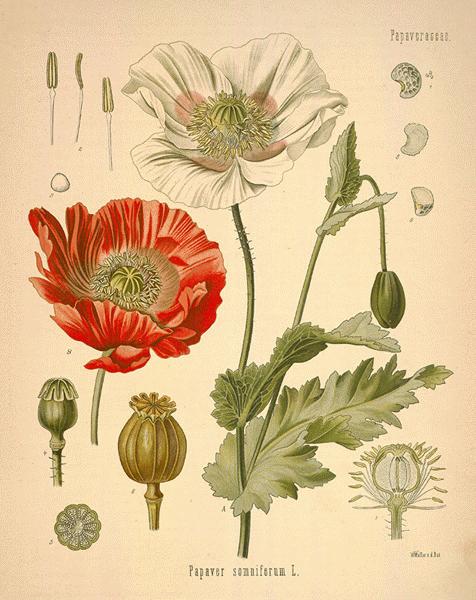
Reproduction
 The
life cycle of opium is generally simple and considerably similar
to most other angiosperms. There are five simple stages in
which the life cycle can be divided into, each being unique, but
doing a specific, important job.
The
life cycle of opium is generally simple and considerably similar
to most other angiosperms. There are five simple stages in
which the life cycle can be divided into, each being unique, but
doing a specific, important job.
Germination - Like the majority of plants, the opium seed germinates in spring. The germination is triggered by increased temperature and moisture changes in the soil. Plant growth includes roots beginning to burrow into the soil, the stem growing upwards, and and lastly leaf formation.
Budding - Budding occurs when the stem has grown to its full height, generally between 1.5 to 3 feet tall. At this point a single bud grows on the stem. There is a possibility of self-fertilization in this stage before the blossom forms.
Flowering - Like most flowers, the opium flower is produced to attract pollinators. Possible colors of this cup-shaped flower are red, white, purple and pink.
Fruit Production - After pollinated, the opium produces a roughly cylindrical fruit to protect the seeds. This fruit produces a latex product that is harvested from the formation of this fruit until it is fully grown. This product is collected for the medicinal products derived from opium, such as morphine and codeine.
Seed Dispersal - As fall nears, the fruiting body of the plant dries out. Once completely dried out, the plant releases thousands of seeds that are carried by wind and water to a location suitable for germination. Once the seeds are released the plant dies.
Like most plants, opium does not reproduce without the help of other organisms. To see some of the interactions that opium encounters, proceed to the Interactions Page.